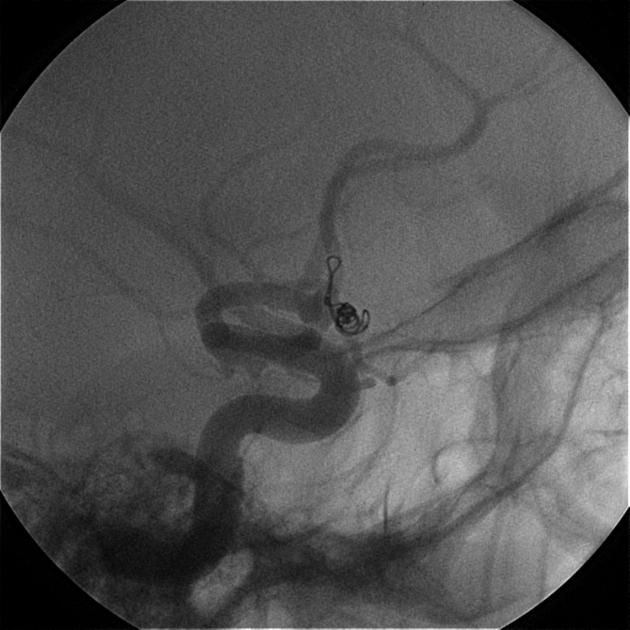A coil herniation refers to the part of a detachable coil prolapsing out of the aneurysm and into the parent artery. It is an uncommon complication and is typically seen at the end of the embolisation procedure. Contributing factors include 1:
- wide aneurysm neck
- instability of the coil in the aneurysm sac
- excessive embolisation
- microcatheter removal
- the coil being pushed out by subsequent coil embolisation
The herniated coil loops can result in compromise to flow in the vessel or distal thromboembolic complications.
Treatment and prognosis
If herniation is identified during the procedure, careful retrieval of the coil may be possible. Alternatively, balloon remodelling or stent placement may be performed.
It may be necessary to keep the patient on long term anti-platelet medication to prevent platelet aggregation and distal embolism.





 Unable to process the form. Check for errors and try again.
Unable to process the form. Check for errors and try again.